Review for Exam 1
1/34
Earn XP
Name | Mastery | Learn | Test | Matching | Spaced |
|---|
No study sessions yet.
35 Terms
Along-glacier direction
The x direction (downhill)
Across-glacier direction
The y direction (across the glacier, from wall to wall)
Speed (u)
change in position (x) divided by change in time. No associated direction
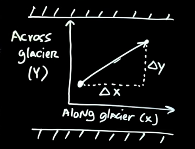
Velocity (v)
Change in vertical speed (y) divided by change in time. Will have an associated direction
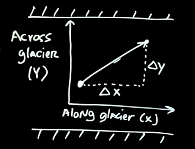
Total speed (across and along-glacier speed)
Add the square root of the speed² and velocity²


Strain rate (epsilon)
(change in length of original line divided by the strained length) * 1 divided by change in time

Glacier speed in 1 dimension
The glacier moves quickly downhill while it extends and thins, and slows down at the terminus, where it compresses and thickens.
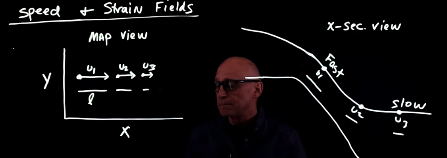
Glacier speed in 2 dimensions
Ice moves fastest in the x direction (downhill), but it also moves in the y direction (across the glacier). The result is a shear motion that stretches the ice and any stripe that may be painted on it to measure motion.
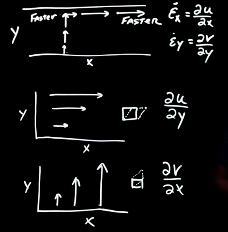
Ice is incompressible. True?
Yes. You can change the shape of it, but not the volume
Polar bonding
(H2O). Atoms share electrons unequally due to differences in their electronegativity. Causes slight negative charge due to unused hydrogens
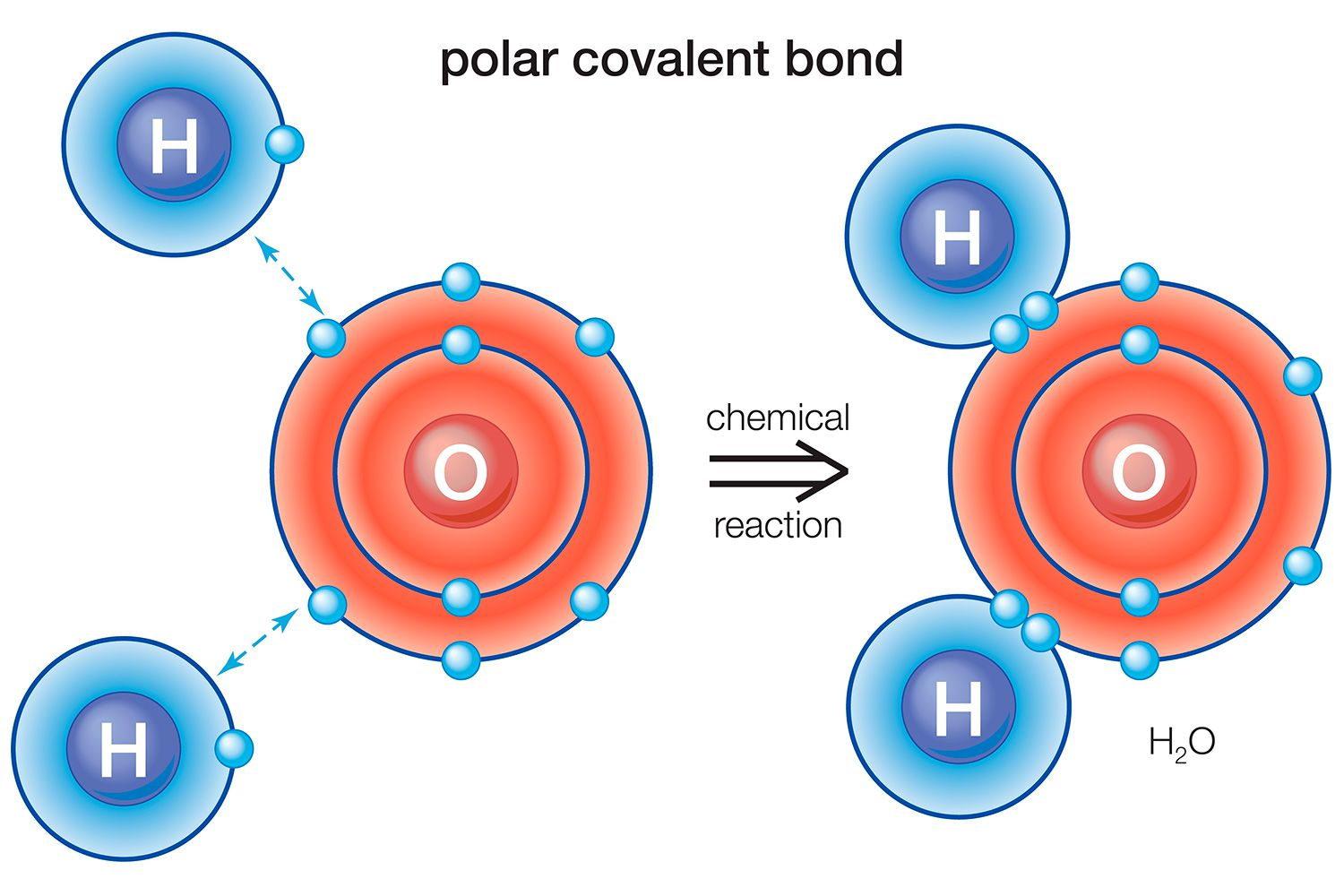
Describe the role of hydrogen bonding in ice deformation.
H2O molecules bond in rings of 6 to create ice, but they don’t form perfect circles—the angle between the hydrogens causes a bent structure. These rings can connect to others due to the unused 2nd hydrogen of the H2O molecule, but these bonds are weak and can break temporarily to allow deformation
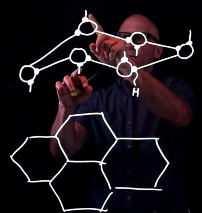
Describe how an ice crystal forms in a glacier.
H2O molecules form polar bonds in rings of 6. These rings link to one another through shared hydrogens, and these rings form sheets. The sheets stack on top of one another, creating a hexagonal crystal
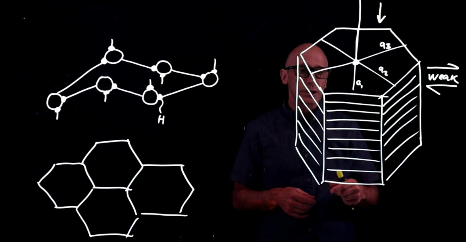
Bonds along an ice sheet versus between sheets
There are twice as many bonds along an ice sheet than between sheets. This creates defects, making sheets resistant to compressional stress but weak to shear stress
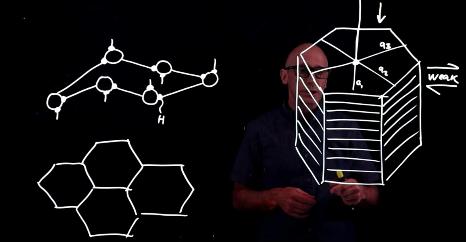
Defects in ice crystals
Due to the bent structure of the ring and how sheets stack, water molecules will eventually have areas where hydrogens/oxygens are very close together. Alike atoms repel one another, and so this creates instability. However, these weak bonds will move one molecule over to form a more stable bond. The defect will thus migrate through the sheet and allow sheets to move past each other
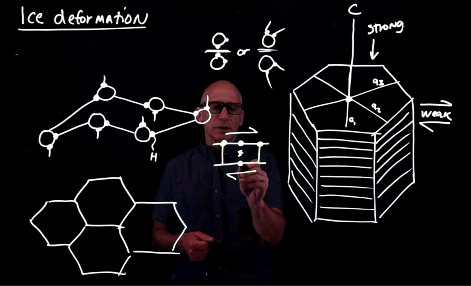
Which parts of the glacier are fastest and slowest? (valley glacier)
Fastest part is the middle where the mass is thickest and has the least impeding it. Slowest part is along the sides where the valley creates drag and the ice compresses on itself
Describe how speed of the glacier is related to its thickness.
Where the glacier is thickest, it is also generally fastest. This is because the immense pressure of the ice allows it to deform more readily, thus sliding more quickly
Where strain rate is greater than 0
Area of extension; at the top of the glacier where the ice is beginning to extend under the force of gravity
Where strain rate is equal to ~0
the middle of the glacier, where it is thickest and moving most quickly (little to impede movement)
Where strain rate is less than 0
Area of compression; near the terminus of the glacier where ice is beginning to build up on itself
Submergent flow
Occurs at the accumulation zone of the glacier; ice flow moves down, “submerging” into the glacier and flowing downhill
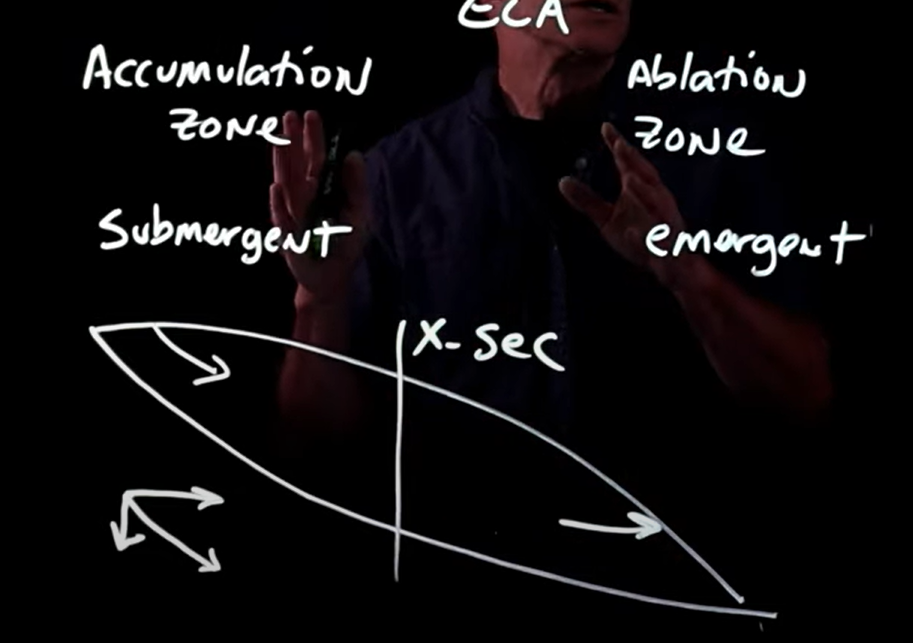
Emergent flow
Occurs in the ablation zone of the glacier; ice flow moves up from the bottom towards the ablation surface, “emerging” at the terminus
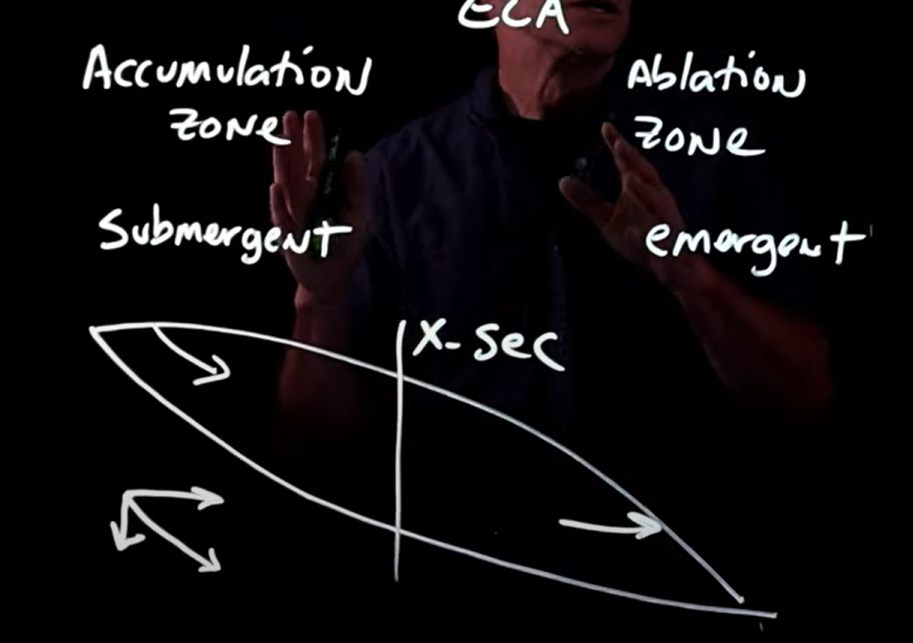
Accumulation zone surface geometry
cold; the ice is bowed inwards and thinner in the middle than on the sides of the valley. This is due to more speed in the middle (no drag from walls)

ELA surface geometry
The surface is relatively flat while basal ice follows the curve of the valley. Thickest part
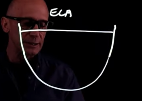
Ablation zone surface geometry
warm; ice is bowed upwards in the middle with ice loss near the valley walls. Slightly thicker than accumulation zone

Glide on basal plane (glacier movement)
Ice movement in which sheets separate and slide past one another through defect migration. Movement is all caused by shear stress
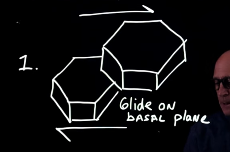
Grain boundary slip (glacier movement)
Unfavorably oriented ice grains shear past one another, causing separation

Recrystallization
Occurs after grain boundary slip or glide on basal plane. When ice is pressurized, it will melt into water. If two unfavorably oriented crystals are undergoing shear, water forms between the contact and migrates to the side of the grain with lower stress. Here, it will refreeze
This is how glacier ice moves over obstacles
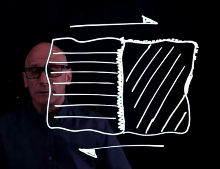
Polycrystalline ice
Most resistant to deformation. Many grains in one crystal. Tend to be newest crystals; grains have different orientations.
Older crystals are much larger and more uniform so they will deform more easily
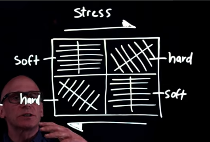
Primary creep
New ice that has not been deformed yet. Crystals are soft and beginning to succumb to basal sliding. Increasing strain rate with time

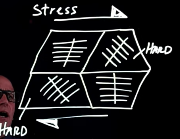
Secondary creep
Grains begin to deform and harden; hard grains begin to block ice flow and prevent soft grains from moving. Motion begins to slow. Strain rate is decreasing
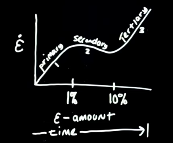

Tertiary creep
Hard grains absorb even more energy and strain elastically until they recrystallize and reduce. Lost mass accumulates onto softer grains and the ice begins to move again when all crystals are oriented favorably. Increased strain
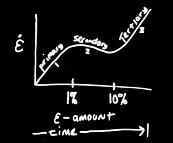
Roughly describe the amount of ice in Antarctica vs. Greenland.
Antarctica has vastly more ice than Greenland (90% of global ice). It is a much larger landmass and holds older ice sheets. If the Antarctic sheet were to melt, it could raise sea level over 200 feet, while the Greenland sheet would raise sea level ~20 feet
Why sea level is variable around different landmasses?
Due to gravity and the size of landmasses. Gravity pulls water level further up towards the poles. Landmasses also pull water towards them depending on how large they are
Why does MISI accelerate sea level rise?
As warm currents infiltrate under a floating ice shelf, they weaken it until it breaks away, and it continues to retreat. When this happens, the ice on land is exposed, and since it isn’t already in the ocean, it adds extra water when it calves
Describe firn water penetration, and how that affects its temperature?
Firn layers are not uniform since they are deposited at different times, and so some are more porous/less dense than others. Melt gets through the upper firn and follows these layers, creating preferential paths or “piping.” This water refreezes at depth, causing temperature spikes in late summer. Models do not account for this